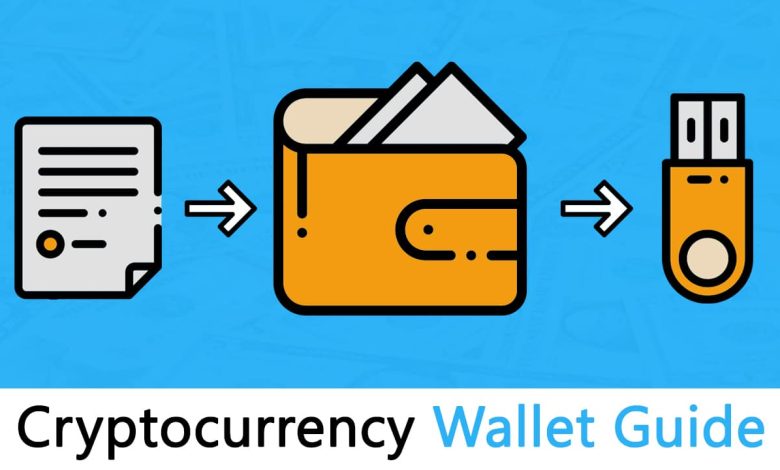How to Set Up a Cryptocurrency Wallet: Step-by-Step Guide

- Understanding Cryptocurrency Wallets
- Choosing the Right Cryptocurrency Wallet for You
- Creating a Secure Wallet: Best Practices
- Backing Up Your Wallet: Importance and Methods
- Transferring Cryptocurrency to Your Wallet
- Securing Your Wallet: Tips and Tricks
Understanding Cryptocurrency Wallets
When setting up a cryptocurrency wallet, it is essential to understand the different types available. Cryptocurrency wallets can be categorized into two main types: hot wallets and cold wallets. Hot wallets are connected to the internet, making them more convenient for frequent transactions but also more vulnerable to hacking. Cold wallets, on the other hand, are offline and provide better security for storing large amounts of cryptocurrency.
Hot wallets include online wallets, desktop wallets, and mobile wallets. Online wallets are cloud-based and accessible from any device with an internet connection. Desktop wallets are software programs that you download and install on your computer. Mobile wallets are apps that you can download to your smartphone.
Cold wallets, also known as hardware wallets, are physical devices that store your cryptocurrency offline. They are considered the most secure option for long-term storage. Popular hardware wallets include Ledger Nano S, Trezor, and KeepKey.
It is important to choose a wallet that meets your needs in terms of security, convenience, and the type of cryptocurrency you plan to store. Research different wallets and read reviews to find one that is reputable and user-friendly. Remember to back up your wallet and keep your private keys secure to protect your funds.
Choosing the Right Cryptocurrency Wallet for You
When it comes to choosing the right cryptocurrency wallet for your needs, there are several factors to consider. The first thing to think about is the type of cryptocurrencies you plan to store. Some wallets are designed to work with specific coins, while others support a wide range of digital assets. It’s important to choose a wallet that is compatible with the currencies you want to hold.
Another important consideration is the level of security offered by the wallet. Look for a wallet that uses strong encryption to protect your funds and offers features like two-factor authentication for an extra layer of security. You’ll also want to consider whether you prefer a hardware wallet, which stores your keys offline for added security, or a software wallet that is more convenient for everyday use.
Ease of use is another factor to keep in mind when choosing a cryptocurrency wallet. Some wallets are designed with beginners in mind and offer a simple, user-friendly interface, while others may be more complex and better suited for experienced users. Consider how you plan to use your wallet and choose one that fits your level of technical expertise.
Finally, consider the reputation of the wallet provider. Look for a wallet that has a strong track record of security and reliability, and check online reviews to see what other users have to say about their experiences. By taking the time to research and choose the right cryptocurrency wallet for your needs, you can help ensure that your digital assets are safe and secure.
Creating a Secure Wallet: Best Practices
When it comes to creating a secure wallet for your cryptocurrency, there are several best practices that you should follow to ensure the safety of your funds. Here are some key tips to keep in mind:
- Use a Hardware Wallet: Consider using a hardware wallet, which is a physical device that stores your cryptocurrency offline. This provides an extra layer of security compared to online wallets.
- Enable Two-Factor Authentication: Always enable two-factor authentication (2FA) on your wallet to add an extra level of protection. This typically involves entering a code sent to your phone or email in addition to your password.
- Backup Your Wallet: Make sure to regularly backup your wallet and store the backup in a secure location. This will allow you to recover your funds in case your wallet is lost or damaged.
- Keep Your Software Updated: Ensure that your wallet software is always up to date with the latest security patches. This will help protect your funds from potential vulnerabilities.
- Avoid Public Wi-Fi: When accessing your wallet, avoid using public Wi-Fi networks, as they can be insecure and make you vulnerable to hacking.
By following these best practices, you can help ensure that your cryptocurrency wallet remains secure and your funds are protected from potential threats. Remember to stay vigilant and take proactive steps to safeguard your investments.
Backing Up Your Wallet: Importance and Methods
Backing up your wallet is a crucial step in ensuring the security of your cryptocurrency holdings. It is essential to have a backup in case your device is lost, stolen, or damaged. Without a backup, you risk losing access to your funds permanently. There are several methods you can use to back up your wallet, each with its own advantages and disadvantages.
One common method is to **create** a paper wallet. This involves printing out your wallet’s private key and public address on a piece of paper. This paper can then be stored in a safe place, such as a safe deposit box or a secure location in your home. While paper wallets are secure from online hacking, they are vulnerable to physical damage or loss.
Another method is to **utilize** a hardware wallet. Hardware wallets are physical devices that store your private keys offline, making them less susceptible to hacking. These wallets are often considered one of the most secure ways to store cryptocurrency. However, they can be expensive and may not be as convenient as other methods.
You can also **opt for** a digital backup by saving your wallet file on a USB drive or external hard drive. This method is convenient and easy to use, but it is important to keep your backup drive secure to prevent unauthorized access to your funds. Additionally, digital backups can be vulnerable to malware and hacking if not properly protected.
Regardless of the method you choose, it is crucial to regularly update your backup to ensure that it includes all recent transactions and changes to your wallet. By taking the time to back up your wallet properly, you can have peace of mind knowing that your cryptocurrency is secure and accessible in case of an emergency.
Transferring Cryptocurrency to Your Wallet
To transfer your cryptocurrency to your wallet, you will need to follow a few simple steps. First, log in to your exchange account where your cryptocurrency is currently stored. Next, locate the option to withdraw or transfer funds. Select the cryptocurrency you wish to transfer and enter the amount you want to send.
After that, you will need to enter the address of your wallet. This address is a long string of characters unique to your wallet, so make sure to double-check it before confirming the transfer. Once you have entered the address, review the transaction details to ensure everything is correct.
Finally, confirm the transfer and wait for the funds to appear in your wallet. Depending on the cryptocurrency you are transferring, the transaction may take some time to be processed. Once the transfer is complete, you will see the funds in your wallet and they will be securely stored until you are ready to use them.
Securing Your Wallet: Tips and Tricks
When it comes to securing your wallet in the world of cryptocurrency, there are several tips and tricks you can follow to ensure the safety of your assets. Here are some best practices to keep in mind:
- Enable two-factor authentication (2FA) whenever possible to add an extra layer of security to your wallet.
- Keep your private keys offline and in a secure location to prevent unauthorized access to your cryptocurrency.
- Regularly back up your wallet to ensure that you can recover your assets in case of a computer failure or other unforeseen events.
- Avoid sharing your private keys or seed phrases with anyone to prevent theft of your cryptocurrency.
- Use a hardware wallet for added security when storing large amounts of cryptocurrency for an extended period.
By following these security measures, you can help protect your cryptocurrency wallet from hackers and other malicious actors who may try to steal your assets.



